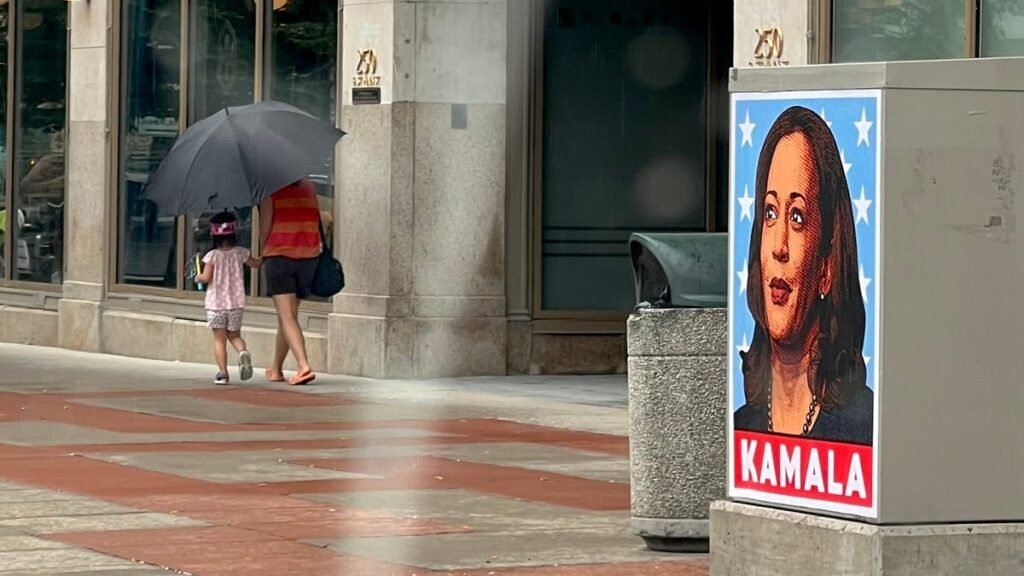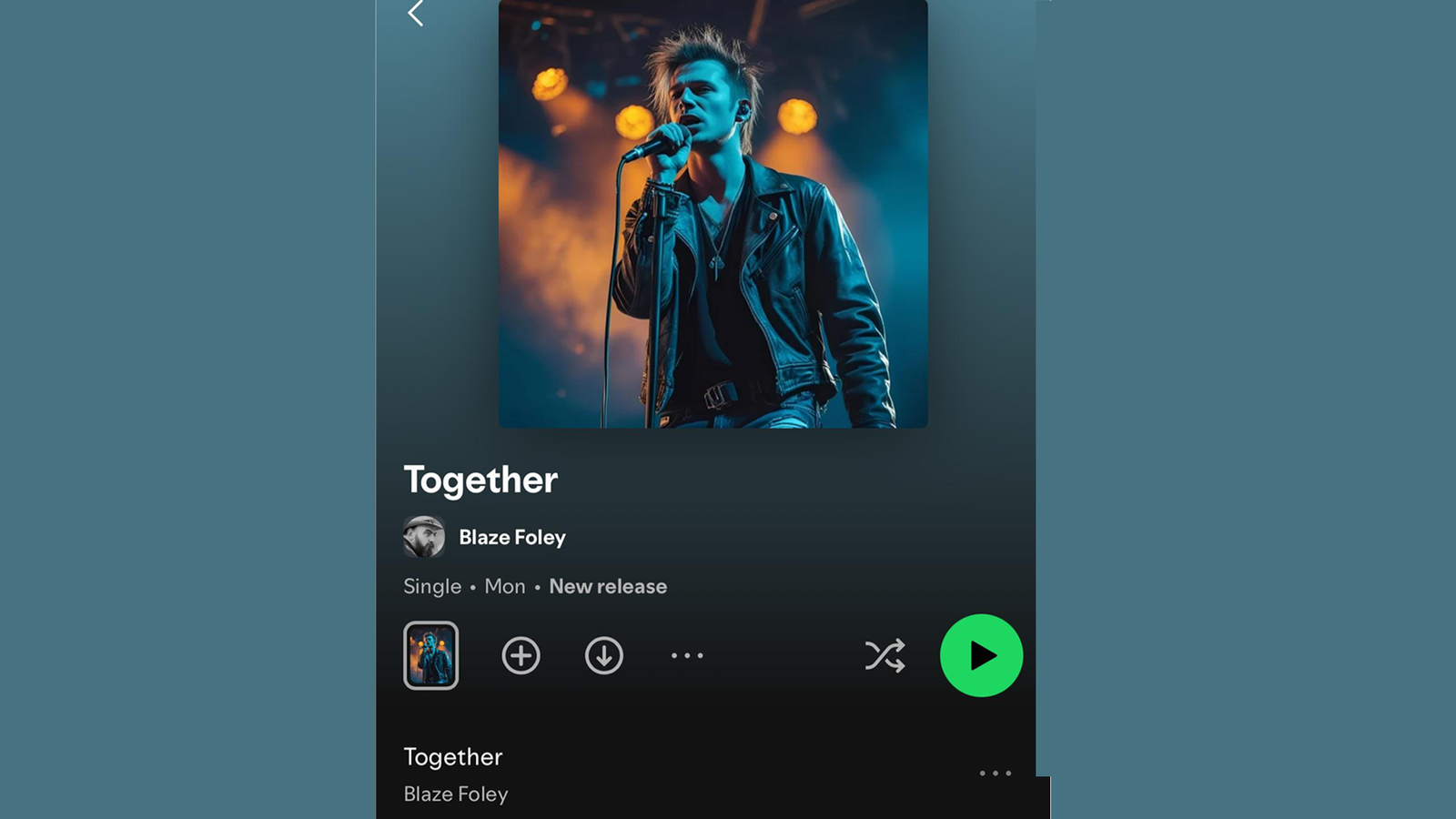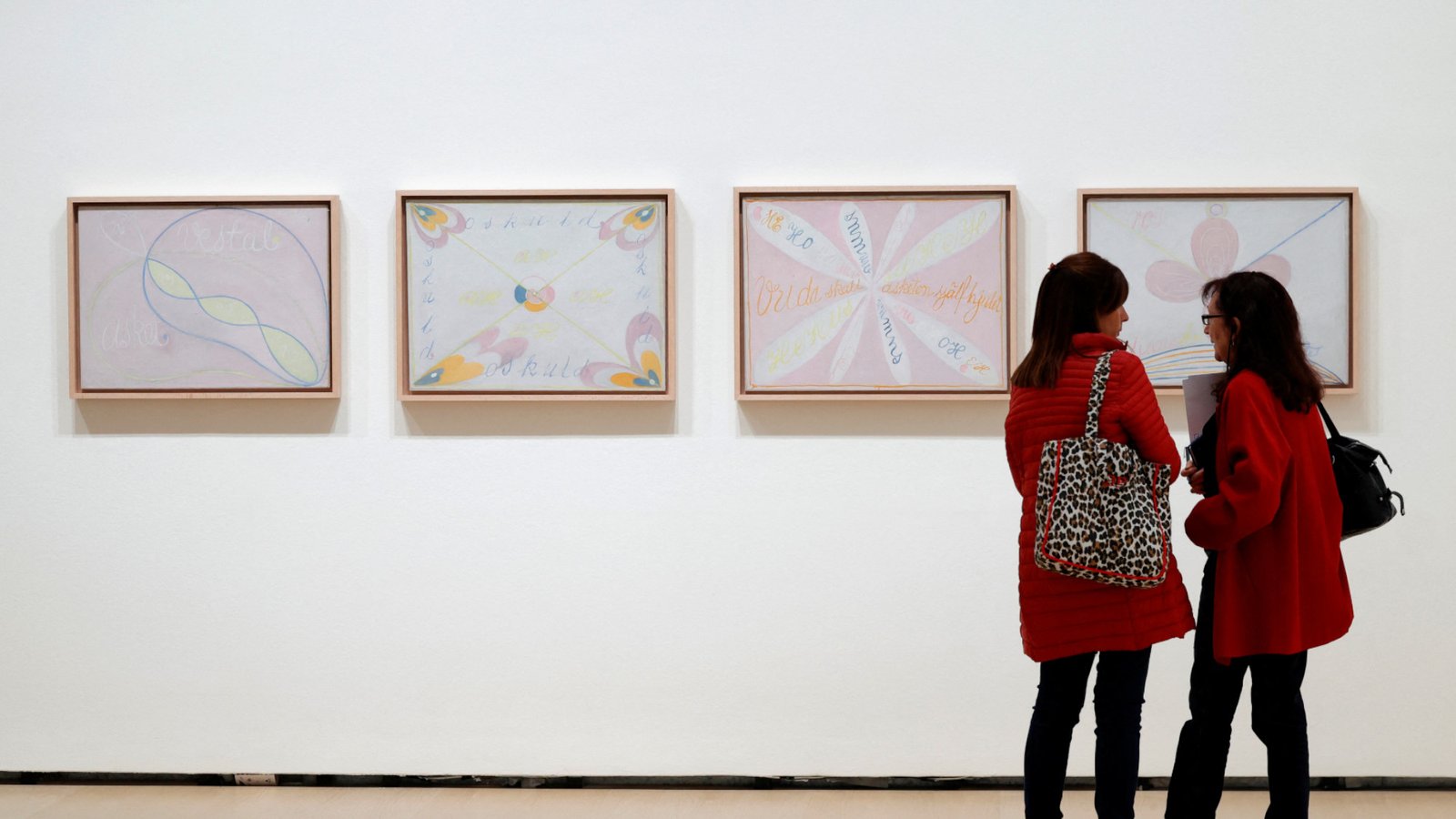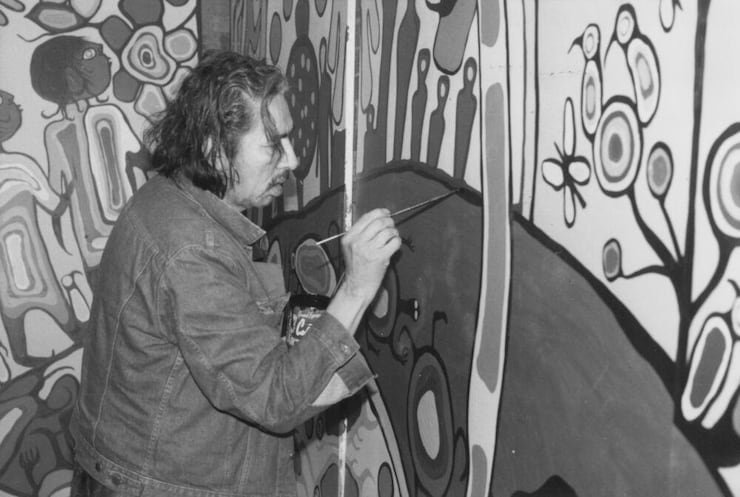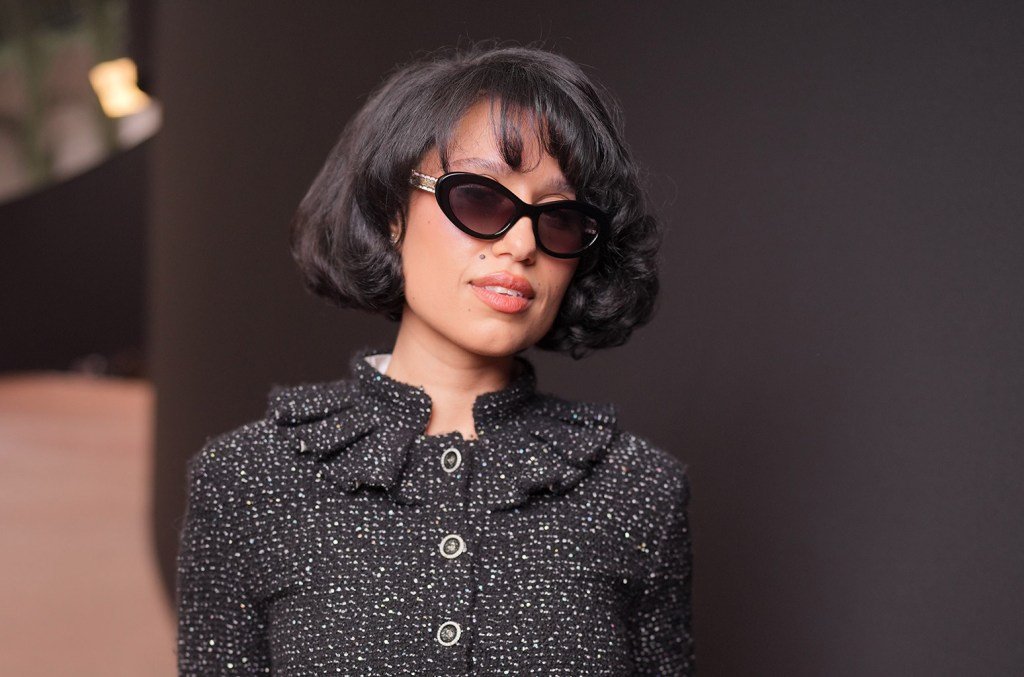
Peculiar Asphalt creates murals on basketball courts
Peculiar Asphalt, a summer mural arts program in Rochester, has created murals around the city on outdoor basketball courts.
Tina MacIntyre-Yee and Shawn Dowd, Rochester Democrat and Chronicle
Rochester, nationally celebrated for its street art, is now at the center of a debate following the recent removal of a mural depicting a presidential candidate, raising concerns about the essence of censorship.
On Aug 1, a wheat paste portrait of Vice President Kamala Harris by local artist Mike Dellaria appeared on a traffic control cabinet along East Main Street, opposite from the intersection with Cortland Street and near Parcel 5.
The next day, the art was removed.
Dellaria’s distinctive portraits have been celebrated in Rochester for the past decade. His artwork is available for purchase at Wegmans and his store in the Public Market.
However, his latest piece landed amid a polarizing political climate months before a presidential election.
In an email, the Monroe County Department of Transportation stated it removed the Kamala Harris piece on Friday, Aug 2, because the artwork did not have a permit and did not meet policy standards.
“Once we were made aware that it was there and didn’t meet our subject matter policy, it was removed/covered up by County personnel,” Gary Walker, the director of communications for the county, wrote in response to Democrat and Chronicle questions.
Bob Lonsberry, a prominent local radio personality, posted a photo of the Harris portrait to his X account shortly before it was removed.
In the post, Lonsberry questioned the county’s role in allowing the art of a Democratic presidential nominee to be placed on government property.
“In the midst of an election, the government should probably not be doing things that seem to be an endorsement or a promotion of a candidate,” Lonsberry said in a phone interview.
His post sparked a tremendous response. Many people were upset with the county, while others pointed out Dellaria’s previous artwork throughout the years, questioning why this one now raised any issues.
Dellaria’s work has included other political figures like Joe Biden, Bernie Sanders and Ruth Bader Ginsburg, as well as high-profile celebrities and athletes like Taylor Swift and Josh Allen.
Many of these portraits appeared on the East Main traffic cabinet and similar cabinets throughout the city, but none are known to have been removed with the same speed as the Harris piece.
Mike Dellaria declined a request to be interviewed for this story.
Street art is generally protected under the First Amendment, but because these traffic cabinets are government property, the county can enforce subject matter policies on what can be displayed. The question is, how does the county decide to implement these policies?
More: He’s the man behind that public art you’ve seen around Rochester: Mike Dellaria
Street art removal: Is it a First Amendment issue?
Conversations about the relationship between street art and the First Amendment are happening nationwide. In 2021, a federal district court judge ruled that political murals on New York City streets constitute a form of government speech.
“Under the government-speech doctrine, the government has its own interests in putting out its own messages without having to post or allow other messages,” The Free Speech Center wrote in an article about the ruling. “Under this doctrine, if speech is deemed to be government speech, there is no First Amendment violation.”
Since the Monroe County DOT traffic cabinets are government property, the county is not required to allow public messaging on them.
When the government allows public artwork and messaging in these spaces, however, they become a limited-purpose public forum.
Michael Grygiel, a First Amendment attorney representing the Democrat & Chronicle, explained that in such a forum, the government can enforce neutral restrictions, such as how long the artwork or message will be posted, but cannot impose restrictions based on viewpoint discrimination.
The county Department of Transportation’s permit procedures on artwork installation for the traffic signal cabinets state, “Artwork should not include any business logos, emblems, advertising, political or religious affiliations including figures.”
Says Grygiel: “They could do that because that isn’t viewpoint-based. It’s not, ‘we’re allowing Republicans, we’re not allowing Democrats,’ it’s saying they’re not allowing any political messages.”
In December 2022, murals of Anna Murray Douglass, Frederick Douglass’ first wife, and Rosetta Douglass Sprague, Anna and Frederick’s eldest daughter, were commissioned by the nonprofit 540WMain and permitted by Monroe County DOT to appear on traffic cabinets at Monroe Avenue and Alexander Street.
Lucy Ray, an artist hired to paint the mural of Anna Murray Douglass, told the Democrat & Chronicle that the project was an homage to these historically unacknowledged Black women. The portraits were eventually moved to the Rochester Contemporary Art Center due to acts of vandalism.
“Painting images of women involved in Frederick Douglass’ life, that, to me, is unquestionably political speech,” Grygiel said. “Douglass was clearly associated with a particular political position, the abolition of slavery.”
The county permitting portraits of these women who could be considered political figures raises questions about viewpoint-based censorship or selectively allowing certain political messaging over others, according to Grygiel.
Though the county can deny all political messaging, the appearance of allowing some over others could be considered a First Amendment violation.
Monroe County’s spokesperson stated that Dellaria’s previous portraits on the traffic cabinets should have been removed since no permits were ever involved. “But with 650 utility boxes to maintain countywide, it’s a tall order. We will have increased monitoring moving forward,” Gary Walker wrote in an email.
Some of Dellaria’s previous traffic cabinet portraits include:
- Bernie Sanders
- The Dalai Lama
- Rosa Parks
- Nelson Mandela
- Greta Thunberg
- Barack Obama
- Joe Biden
“The fact that the government has not previously required the artist to obtain a permit certainly supports the inference in this particular case that the removal of the Kamala Harris painting in such short order was motivated by disapproval of the particular image and message presented,” Grygiel said. “So, it seems like the invocation of the permit requirement is pre-textual.”
More: Due to repeated acts of vandalism, a Black history mural project has moved
Heckler’s Veto: What is it? Does it apply?
Bob Lonsberry’s post on X, questioning Monroe County allowing the portrait on government property, was posted on Aug 2, the same day the Kamala Harris artwork was removed.
“It’s a beautiful piece of art. It’s a wonderful portrait of Kamala Harris, but you know, we are in the midst of a presidential election, and there it is,” Lonsberry said in an interview. “It’s unavoidably a promotion of a candidacy in this time frame.”
There are over a hundred replies under Lonsberry’s post.
One comment read, “Looks like something that would be posted in a communist country.” Another stated, “I just called Adam Bello and asked where he has Donald Trump’s picture posted.”
Lonsberry continued, “I think it would be just as inappropriate for Donald Trump to be on there, or say somebody running for county court judge, or Joe Morelle, or anybody on the ballot right now.”
Another comment under the post included photos of Dellaria’s previous portraits. “Suddenly, you don’t recognize the work of Dellarious? Politics aside, he’s been using that particular box for a long time for various wheat pastes. Sure, without permission, but you’re reaching with what you’re implying in your tweet.”
The county didn’t state whether Lonsberry’s post alerted them to the portrait or directly led to the removal.
Lonsberry said he believes this most likely was the case. “It wasn’t a good look, and, you know, I can understand them taking it down,” he said. “They probably didn’t like the negative scrutiny.”
According to attorney Grygiel, if the tweet and responses to it triggered the county’s removal of the artwork, the circumstance falls under Heckler’s Veto.
The Alliance Defending Freedom refers to Heckler’s Veto as “the restriction of a person’s speech, on behalf of the government, out of fear of a potential hostile reaction from opponents of that speech.”
These First Amendment issues are complex and heavily reliant on the specific context of each situation, he said.
“It’s clear here that the government was responding to the sound of fury,” Grygiel said. “The government cannot indulge the sensorial impulses of a majority because it disagrees with unpopular speech.”
More: AAA names Rochester among top U.S. cities for street art and murals
— Madison Scott is a journalist with the Democrat and Chronicle who edited our Weld Street Project and also did reporting for it. She has an interest in how the system helps or doesn’t help families with missing loved ones. She can be reached at MDScott@gannett.com.

